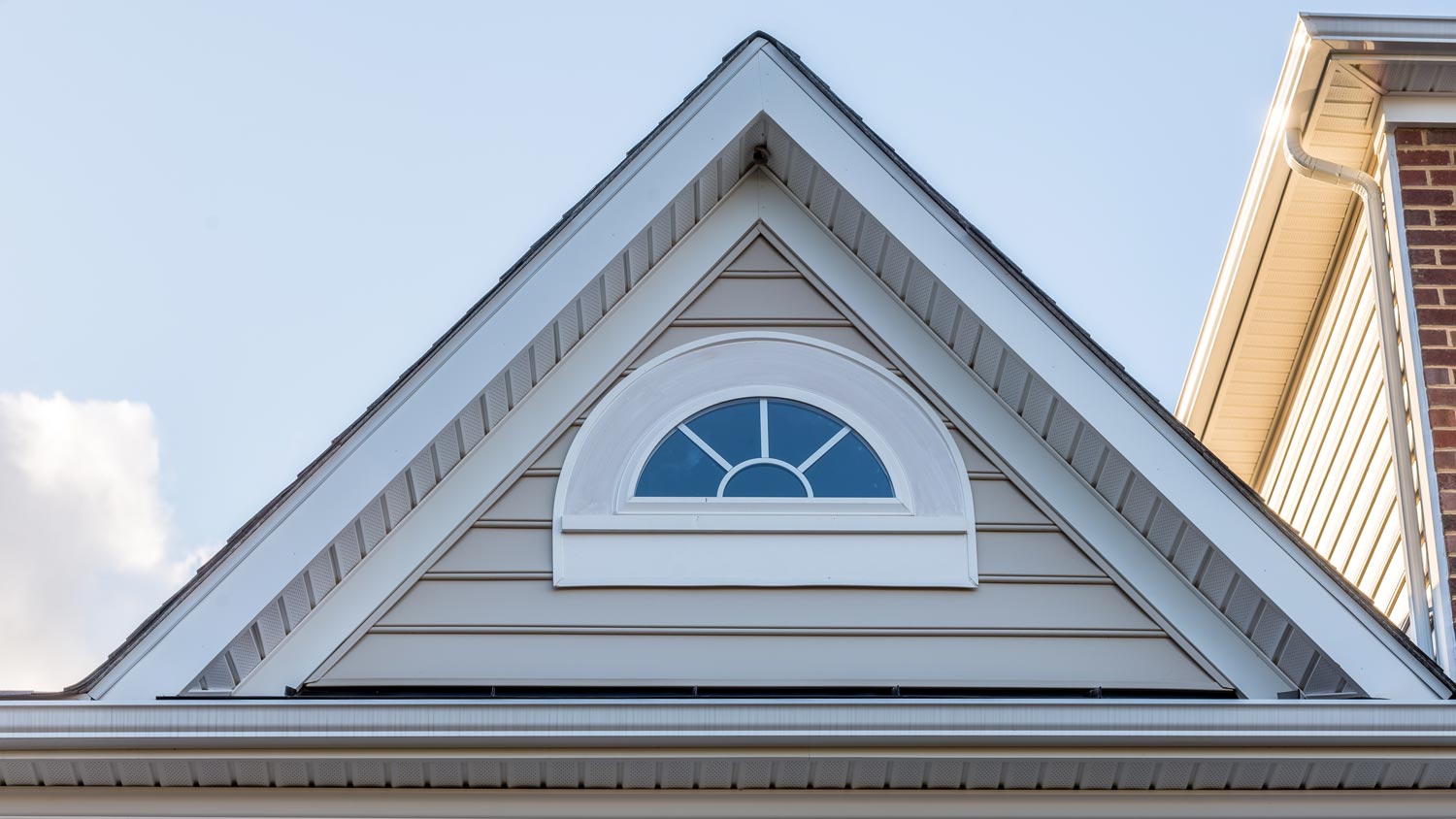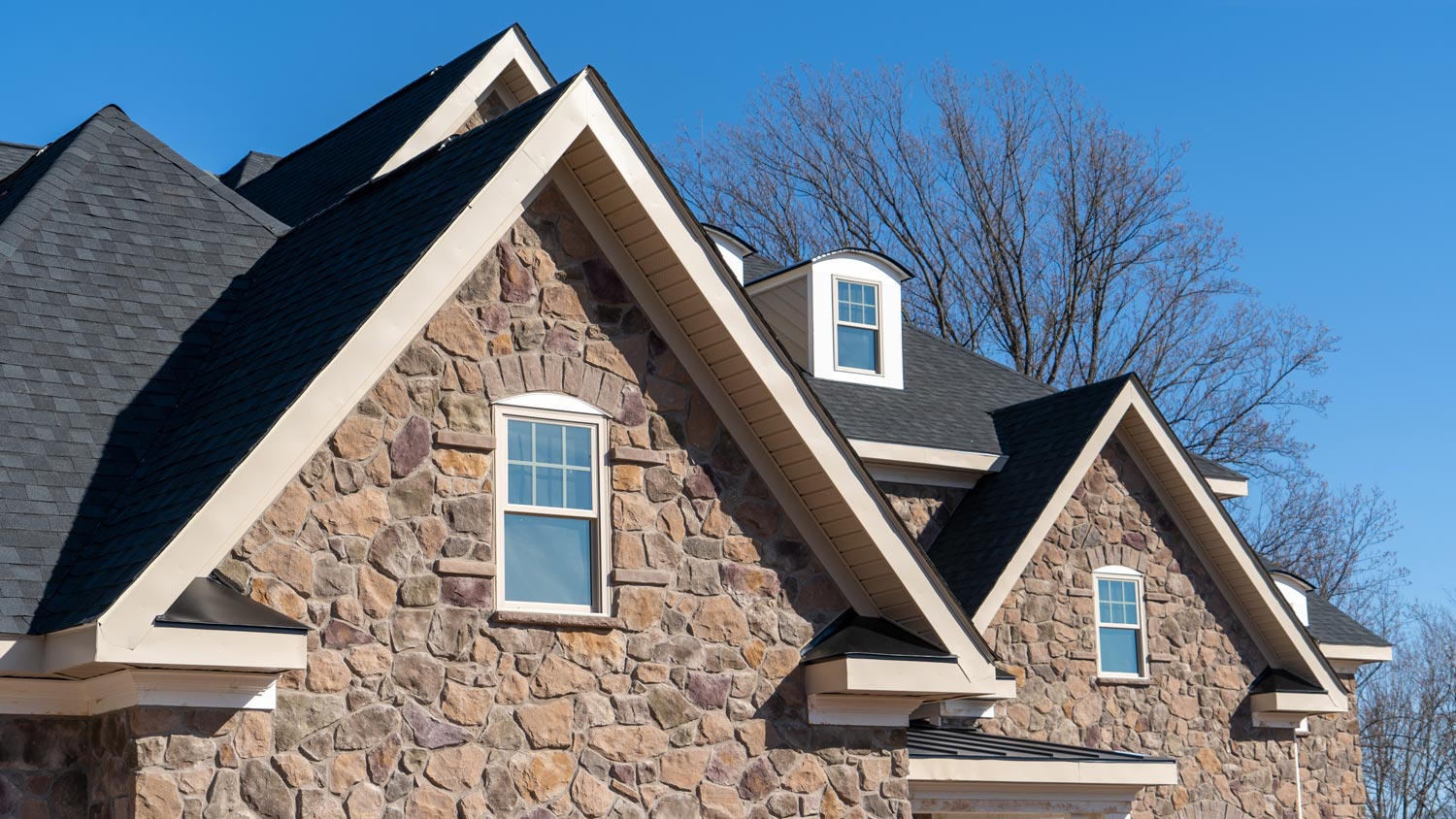
A metal roof can defend your home against Ohio’s varying weather conditions. Learn how much a metal roof costs in Columbus, OH.
Add some flair to your roof edges


Enhancing your home’s curb appeal comes in many forms. One subtle yet effective way to boost any home’s appearance and value is with fascia boards and soffits. But shopping around for the perfect soffit and fascia materials can feel daunting if you are unsure of what to look for. Both fascia boards and soffits help keep your attic pest-free, so you should not skimp on materials. Always go for durable, long-lasting products.
Fascia boards are the long horizontal boards that run below your roof, wide side perpendicular to the ground. They are important because you install your gutters onto them. They also cover the rafters and prevent moisture damage to the roof deck. Fascia boards (think “facing”) are easily visible from the street, so they play a part in your home’s curb appeal.
Soffit boards are beneath and behind the fascia boards and are the exposed surface that covers your eaves, wide side parallel to the ground. They protect the roof deck from moisture and pests, and provide ventilation to the attic area. Without proper soffits, your roof would eventually have moisture problems which could lead to mold or, even worse, structural problems like roof failure.
Choosing the right soffit and fascia material will impact the way your home looks, as well as your future maintenance schedule. Consider if you are willing to do more maintenance for a nice-looking material like wood, or if you would prefer a low-maintenance material like aluminum. You should also choose a material that can withstand the typical climate in your area.
Here are 10 types of soffit and fascia board materials to consider for your home’s roof.
Lumber is a popular choice for fascia boards because it is easy to paint and can match the wooden structures already present in your home. Cedar, redwood, fir, and pine are a few tried-and-true wood options for fascia boards. The best wood is one that is resistant to rot and moisture.

Wooden soffits add warmth and a modern look to any home. Solid wood or plywood are two common options. Be sure to choose a pressure treated wood to prevent rotting and damage from pests like carpenter wasps. Keep in mind that a wooden soffit style is more flammable, less durable, and less resistant to moisture than other options like aluminum or vinyl. You will want to factor in fascia and soffit repair costs when opting for a material that is prone to water damage and rot.
Polyvinyl chloride (PVC) is a durable yet lightweight plastic material that is commonly used in piping but can also be found in sidings and fascia boards. PVC is one of the most budget-friendly materials; however, it contains phthalates and BPA, both potentially harmful fumes that can be emitted when PVC is exposed to high temperatures.

Just as you can use PVC products for fascia boards, you can also use them for soffits. PVC soffits are a low-cost option for adding a soffit to your home. The material is effective in protecting homes from water leaks and rot, but it might not be a good option for the avid environmentalist looking for a more eco-friendly option.
Though PVC is a type of vinyl product, it is important to note that it is just one type of vinyl material on the market for fascia boards and soffits. Unplasticized polyvinyl chloride (uPVC) is a more durable and environmentally-friendly type of vinyl than PVC. This material is an ideal replacement for wood in the construction industry and can be engineered to look like all kinds of materials, including wood, metal, stone, and more.
uPVC is less likely to warp and is stronger, more fire resistant, and recyclable, making it an ideal choice for fascia boards, especially for homes in hot and dry climates where heat and fire hazards pose a threat to the stability of the plastic polymers. A local roof repair pro can advise you on the best material for your roof.

uPVC is a great option for soffits because of its smooth surface and water resistance. If you live in a region that gets lots of storms, uPVC is an ideal choice. Though you will pay slightly more for vinyl soffits compared to PVC soffits, you will get much more variety in appearance than you would with PVC, along with a more eco-friendly soffit material option.
There are three types of vinyl soffits: solid, vented, and hollow.
Solid: A common and affordable soffit type with a simple design that seals the attic off from outdoor air
Vented: Contains small perforations to boost air circulation in the attic
Hollow: A solid design with predrilled holes for ventilation to increase air circulation in the attic

Aluminum is pricier than uPVC and has fewer insulative properties, but it is an easy material to work with, making it a top choice for homes with unique roofing designs. Aluminum is water resistant, rot resistant, fire resistant, lightweight, and paint-friendly, so you can customize the appearance of your aluminum fascia to match your home’s aesthetics.
You will not have to do much to maintain aluminum, but you might need to invest in attic insulation. Another downside is that aluminum can get bent or dent easily, which might negatively affect the appearance of your home’s fascia.
Aluminum works well as a soffit material option because it prevents water leaks and protects your home from bugs better than wood. As with aluminum fascia boards, expect to pay more for aluminum soffits than you would for most other materials. An extra bonus is that well-vented aluminum helps prevent ice dams and the damage that can occur in your gutters, roofing, and edge materials.
Another sustainable option is fiber cement fascia boards, also called composite fascia boards. This material consists of recycled wood chips, sawdust, and epoxy resin. Due to the unique combination of materials, fiber cement is more durable and resistant to mold and water damage than traditional wood fascia boards, but it also costs more.
For this reason, most homeowners opt for a more affordable material. But keep in mind that fiber cement boards will last longer than wooden boards, potentially saving you money in the long run.

If you have a deck made of composite materials, you will find that fiber cement or composite soffits pair nicely with the overall look of your entertainment space. Fiber cement is another material choice for soffits that combines the aesthetics of a wooden surface with the water-resistant characteristics of plastic to give you the best of both worlds.
This material has a clean wooden texture that measures up well against temperature changes, water and moisture damage, and pests. The best part is that you do not need to treat composite like you do traditional wood, so there is less maintenance.
There are plenty of choices for you to choose from. You might go with matching materials for both your soffit and fascia, or choose different materials depending on what looks best with your home’s trim. You might also consider color-matching your gutters and downspouts if you are looking for a very cohesive look. Ultimately, the choice is yours depending on your needs and wants. Once you have landed on the best material for your preferences and needs, you should hire a roof repair pro near you to help with the installation.
From average costs to expert advice, get all the answers you need to get your job done.

A metal roof can defend your home against Ohio’s varying weather conditions. Learn how much a metal roof costs in Columbus, OH.

Dealing with a visibly damaged roof or leak? Learn about roof repair costs in Columbus to see how much you’ll need to budget for a permanent solution.

Learn about roof replacement costs in Columbus and what factors are at play to budget accurately and make sure you’re getting a fair price.

Choosing the right roofing material can help your home stand up to snow, ice, and harsh winds. Learn more about the best roofing materials for cold climates.

Roof inspections seem straightforward, but there are different types, with different costs for each one. Understand your options with this complete guide.

Soft spots on your roof can indicate underlying damage. Learn how to identify soft spots, what causes them, and why it’s so important to repair them quickly.